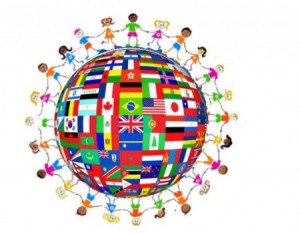2] In this lesson I say that it should be clear that the discourse on nationalism is also about ethnicity and ideologies of “race.” If you trace the historical overview of nationalism in Canada in the CanLit guide, you will find many examples of state legislation and policies that excluded and discriminated against certain peoples based on ideas about racial inferiority and capacities to assimilate. – and in turn, state legislation and policies that worked to try to rectify early policies of exclusion and racial discrimination. As the guide points out, the nation is an imagined community, whereas the state is a “governed group of people.” For this blog assignment, I would like you to research and summarize one of the state or governing activities, such as The Royal Proclamation 1763, the Indian Act 1876, Immigration Act 1910, or the Multiculturalism Act 1989 – you choose the legislation or policy or commission you find most interesting. Write a blog about your findings and in your conclusion comment on whether or not your findings support Coleman’s argument about the project of white civility.
Does Canada actually reflect multiculturalism? Many people may often hear that Canada is a country that embraces multiculturalism. However, when thinking about examples of state legislations or polices, perhaps there are certain aspects such as distinctive groups that are discriminated and excluded based on these regulations. Firstly, let’ s unpack and discuss about the idea of ‘multiculturalism’!
s unpack and discuss about the idea of ‘multiculturalism’!
What is ‘multiculturalism’? I think the first thing that may come to mind would be relating to diversity of cultures and how each culture has their own set of values, traditions, customary behaviours, and the list goes on. I find the Multiculturalism Act 1989 most interesting because personally I always hear my friends or even classmates from other courses always have this assumption that Canada is categorized as being a place that celebrates this idea of ‘multiculturalism’? Also, I am born and raised in Canada and I personally feel that even when growing up in this country, institutions such as public schools naturally integrates this perception. This also made me realize that I do not often think too critically on this idea. Perhaps, many have often hear about this but do not examine further of how Canada became to be or is associated with this idea of ‘multiculturalism’. Also, when I was first initially researching for this, I began reading some articles such as John Berry’s research on multiculturalism in Canada. It’s a quick read! But, in summary, Berry discusses how the policy of multiculturalism proceeded and highlights the important purposes behind creating the policy. Canada first declared to adopt this multicultural policy in 1971. However, this policy was not officially recognized and put into place until around 1988. He argues that there are two main goals of the policy which are to support for the maintenance and development of cultural communities (the cultural component); and promotion of intercultural contact along with the reduction of barriers to such participation the intercultural component” (Berry 663). This idea that he unfolds through his article suggests that ore of the meaning of multiculturalism lies the notion of individuals having and sharing a collective identity as Canadians, and who also have particular identities as members of various ethnocultural communities” (Berry 664). This part in his text reveals how it is also important for one to understand their own culture and to be active in building relations with others. This idea of emphasizing building relations among diverse culture is interesting because this policy attempts to respect and celebrate diversity but some claim that it was a failed promise. This article provides a glimpse of how there are certain aspects excluded and still problematic with this policy. Some of the issues they discuss include lack of integration between cultures and current systems with immigrants. Also, relating Coleman’s argument about the project of white civility, he discusses the idea of nation-building and how a ‘natural community’ seems to be unsuccessful. This made me think of an example within Canada specifically on the idea of how certain places in Canada may not seem to be as well-intergrated as how people would imagine it to be. For instance, Quebec is a place known for people who often speak mainly French and visitors who do not speak it can be casted as being ‘different’ or out extremely fast.
Now, do you think Canada is a ‘multicultural’ place?
Work Cited
Berry, John W. “Research on Multiculturalism in Canada.” International Journal of Intercultural Relations 37.6 (2013): 663. Web.
http://www.thestar.com/opinion/editorialopinion/2010/11/07/persichilli_the_failed_promise_of_multiculturalism.html
 s unpack and discuss about the idea of ‘multiculturalism’!
s unpack and discuss about the idea of ‘multiculturalism’!